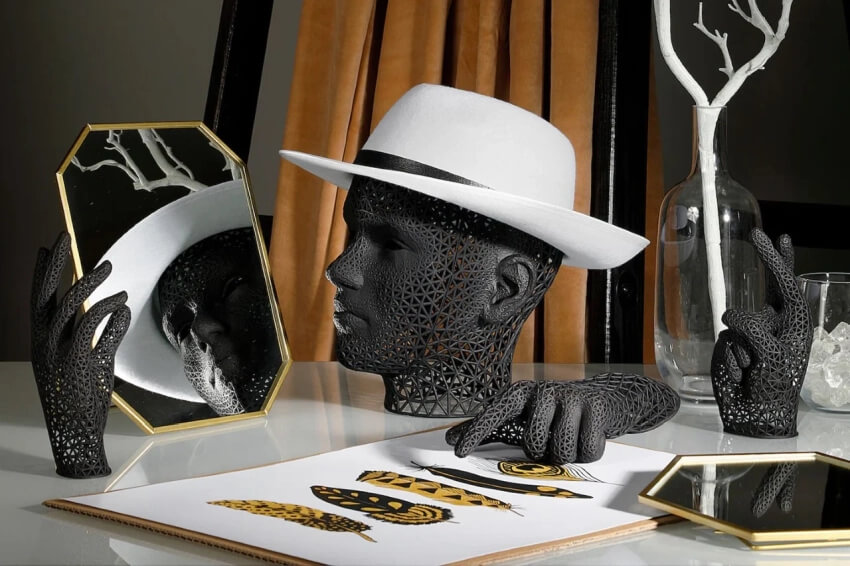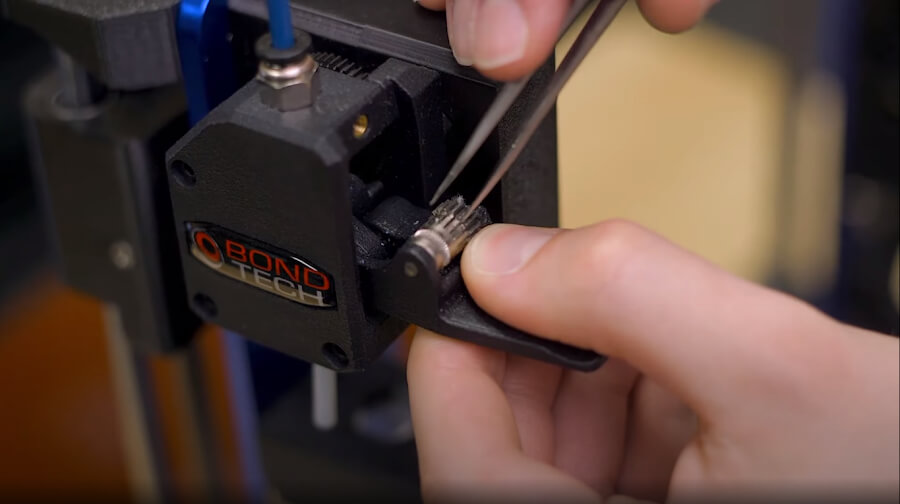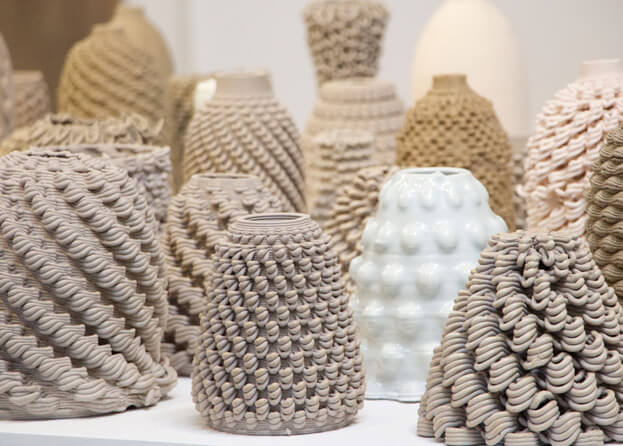Welcome, folks! Ready to dive into the futuristic world of home decor with a touch of magic? Well, that’s what 3D printing brings to the table—or should I say, brings to your living room. In this blog post, we’re going to unravel the secrets, tips, and maintenance hacks for seamlessly incorporating 3D printing into your Brooklyn, New York home decor game.
Understanding 3D Printing for Home Decor

Now that we’ve set the stage, let’s peek behind the curtain and understand what makes 3D printing tick in the realm of home decor.
How Does the Magic Happen?
At its core, 3D printing is like having your own personal wizard crafting tangible spells from digital blueprints. But instead of a wand, it uses materials like PLA, ABS, or resin to bring your designs to life layer by layer. There’s a method to this madness, and it comes in various flavors:
| Printing Tech | Description |
| Fused Deposition Modeling (FDM) | Think of it as building with layers of hot plastic spaghetti. Affordable and great for beginners. |
| Stereolithography (SLA) | Uses a pool of liquid resin and a laser to solidify each layer. Ideal for intricate, detailed prints. |
| Selective Laser Sintering (SLS) | Laser power fuses powdered material into a solid form. Popular for high-precision and durable prints. |
Materials Matter
Not all 3D printing materials are created equal. Your choice can make or break the end result. Here’s a quick rundown:
- PLA (Polylactic Acid): The eco-friendly option. It’s derived from corn starch and gives you a smooth finish. Great for decorative pieces.
- ABS (Acrylonitrile Butadiene Styrene): Sturdy and resistant to heat, but ventilation is your friend due to some fumes during printing.
- Resin: For the detail-oriented. Resin prints are like the fine wine of 3D printing, offering high resolution and intricate designs.
Understanding these basics sets the stage for your journey into the world of 3D-printed home decor. But wait, there’s more! We’re just getting warmed up. Stay tuned for the lowdown on choosing the right 3D printer for your creative escapades.
Choosing the Right 3D Printer for Home Decor
Alright, now that we’ve got the basics down, let’s talk about finding the perfect accomplice for your 3D printing escapades. Choosing the right 3D printer is like selecting the right paintbrush for an artist – it makes all the difference.
Consideration of Budget and Purpose
First things first – what’s your budget? 3D printers come in various price ranges, and while the high-end models may have bells and whistles, there are gems for every wallet size. Define your budget and let that guide your quest.
Print Volume and Size
Size matters, especially in 3D printing. Think about the types of projects you have in mind. A printer with a small print bed might cramp your style if you’re dreaming of larger-than-life centerpieces.
| Printer Model | Print Volume | Ideal For |
| Ender 3 | 220 x 220 x 250 mm | Small to medium-sized decor items |
| Prusa i3 MK3 | 250 x 210 x 200 mm | Versatile for various home projects |
| Creality CR-10 | 300 x 300 x 400 mm | Large-scale prints and bold ideas |
Print Resolution and Quality
Now, let’s talk about the pixels of the 3D printing world – the resolution. Higher resolution means finer details, but it might slow down the printing process. It’s a delicate dance between speed and precision:
- Low Resolution: Quick prints, suitable for prototypes.
- Medium Resolution: The sweet spot for general home decor.
- High Resolution: Ideal for intricate sculptures and detailed designs.
User-Friendly Features
Unless you’re a tech wizard, you’ll want a printer that speaks your language. Look for user-friendly features like touchscreen interfaces, auto-leveling beds, and straightforward assembly instructions.
Reviews and Recommendations
When in doubt, turn to the community. Online reviews and recommendations from fellow 3D printing enthusiasts can be a goldmine of insights. Forums, YouTube channels, and product reviews are your best friends in this quest.
Tips for Successful 3D Printing
So, you’ve got your 3D printer, and you’re ready to unleash your creativity onto the physical realm. Hold onto your hats because it’s time for the nitty-gritty of successful 3D printing. We’re talking about tips that can make the difference between a masterpiece and a meltdown.
Calibration and Leveling
Imagine trying to dance on an uneven floor – not fun, right? Your 3D printer feels the same way. Calibrating and leveling ensure that the printing bed is flat and the nozzle is at the optimal height. Most printers come with built-in tools and guides for this crucial step.
Choosing the Right Print Settings
The devil is in the details, or in this case, the print settings. Let’s break it down:
- Layer Height: Think of it as the resolution setting. Smaller layers mean finer details but longer print times.
- Infill Percentage: The amount of interior structure in your print. Higher infill means a sturdier piece.
- Print Speed: Faster isn’t always better. Balance speed with quality for optimal results.
Using Support Structures When Necessary
Just like a building needs scaffolding during construction, some 3D prints need support structures to maintain their shape. Most slicing software will give you the option to add supports where needed, ensuring your masterpiece doesn’t crumble mid-print.
Monitoring the Printing Process
This isn’t a ‘set it and forget it’ scenario. Keep an eye on your printer, especially during the first layers. It’s like babysitting, but for your creations. If something looks off, you can catch it early and save the day.
Post-Processing Techniques for a Polished Finish
The finishing touches matter. Sanding, painting, or coating your 3D prints can take them from raw to refined. It’s the difference between ‘oh, that’s cool’ and ‘wow, did you really make that at home?’
Maintenance of 3D Printers
Congratulations on your 3D printing victories! Now, let’s talk about the unsung hero of this creative journey – maintenance. Just like a well-oiled machine, your 3D printer needs a little TLC to keep the magic flowing. Here’s your maintenance guide to ensure your printer stays in tip-top shape.
Regular Cleaning of the Printer
Imagine if your vacuum cleaner never got a clean – it wouldn’t suck as well, would it? Same goes for your 3D printer. Regular cleaning prevents dust, debris, and filament buildup that can mess with your prints.
| Component | Cleaning Frequency | Cleaning Method |
| Print Bed | After Each Print | Isopropyl alcohol or glass cleaner for a pristine surface. |
| Nozzle | Monthly | Heat the nozzle and use a wire brush or specialized tools. |
| Extruder Gears | Monthly | Remove any accumulated dust with a small brush. |
Lubrication of Moving Parts
A squeaky printer is like a squeaky door – annoying and a sign that something needs attention. Lubricate the moving parts, especially rods and rails, with a light machine oil to keep things running smoothly.
Checking and Replacing Consumables
Just like changing the oil in your car, consumables in your 3D printer need attention. Keep an eye on these:
- Filaments: Check for any signs of wear, knots, or tangles. Store them in a cool, dry place to prevent moisture absorption.
- Print Beds: Glass beds can chip or crack over time. Inspect and replace if needed.
- Nozzles: If you notice changes in print quality, the nozzle might be clogged. Regularly clean or replace it.
Firmware and Software Updates
Yes, your 3D printer has a brain, and just like your smartphone, it needs updates. Check for firmware and software updates from the manufacturer to ensure you have the latest and greatest features.
Troubleshooting Common Issues

Sometimes, even the best-laid plans go awry. Be prepared to troubleshoot common issues like layer adhesion problems, warping, or printing failures. Online communities and forums are treasure troves of solutions from experienced hands.
Safety Measures for 3D Printing at Home
Safety first, creators! Now that you’ve mastered the art of 3D printing and maintenance, let’s talk about ensuring that your creative haven remains a safe space. Just like a responsible wizard doesn’t play with fire without precautions, a responsible 3D printer operator follows safety measures. Let’s dive into the dos and don’ts.
Proper Ventilation
3D printing involves melting plastics, and some filaments can release fumes that, let’s be honest, you don’t want to be breathing in. Ensure your printing space is well-ventilated. If possible, consider setting up near an open window or invest in a ventilation system.
Use of Safe and Non-Toxic Materials
Not all filaments are created equal. Opt for filaments labeled as safe and non-toxic, especially if your prints will share living spaces with humans and pets. PLA, for instance, is known for being eco-friendly and safe.
Fire Safety Precautions
We’re not saying your 3D printer is a fire-breathing dragon, but better safe than sorry. Follow these precautions:
| Safety Measure | Description |
| Install Smoke Detectors | A must-have in any creative space. |
| Avoid Leaving Printer Unattended | Be there or be square. If something goes wrong, you want to catch it early. |
| Invest in Fire-Resistant Enclosures | An extra layer of protection for added peace of mind. |
Monitoring the Printing Process
Keep a watchful eye on your printer, especially during the first few layers. If anything seems off-kilter, you can intervene before it turns into a full-blown catastrophe. It’s like being a vigilant lifeguard for your 3D prints.
Inspirational 3D Printing Projects for Home Decor
Alright, master creators, you’ve conquered the technicalities, maintained your 3D printer like a pro, and ensured a safe haven for your crafting escapades. Now, let’s dive into the realm of inspiration. Buckle up as we explore some jaw-dropping 3D printing projects that can turn your living space into a gallery of your own creation.
Customized Home Accessories

Why settle for off-the-shelf when you can create something uniquely yours? Here are some ideas to get those creative juices flowing:
- Personalized Key Holders: Craft a key holder that not only keeps you organized but also adds a touch of personality to your entryway.
- Custom Drawer Pulls: Upgrade your furniture with bespoke drawer pulls that showcase your style.
Artistic Sculptures and Figurines
Turn your space into a mini art gallery with 3D printed sculptures and figurines. Unleash your inner Michelangelo and sculpt without the mess:
| Project | Description |
| Abstract Wall Art: | Craft visually stunning wall art to be the focal point of any room. |
| Miniature Busts: | Create 3D-printed busts of historical figures or even family members. |
Functional and Decorative Items
Why stop at aesthetics when you can add functionality to your creations? Here’s a blend of form and function:
- Planters with Personality: Bring greenery indoors with uniquely shaped planters that double as decor.
- Custom Lampshades: Light up your space with a personalized touch. Experiment with intricate designs to cast mesmerizing shadows.
Personalized Gifts
Spread the joy of 3D printing by gifting personalized creations to your loved ones:
- Custom Phone Stands: Craft a handy and stylish phone stand for friends or family.
- Nameplate or Door Sign: Add a touch of warmth to any home with a personalized door sign or nameplate.
The Sky’s the Limit
Feel inspired yet? These projects are just the tip of the iceberg. With 3D printing, your imagination is the only limit. So, what’s your next masterpiece going to be?
The Grand Finale
As we bid adieu to this exploration of 3D printing for home decor, the future beckons with endless possibilities. From smart decor that anticipates your needs to sustainable materials that align with eco-friendly values, the journey is just beginning.
Now, dear creators, go forth into the future armed with knowledge, creativity, and a dash of 3D printing magic. Your decor, your rules. Until next time, happy printing!
FAQs: Unraveling the World of 3D Printing for Home Decor
Let’s address some burning questions that might be lingering in your creative minds. Dive into these frequently asked questions to gain more insights into the fascinating world of 3D printing for home decor.
Q1: How difficult is it to get started with 3D printing for home decor?
A1: Getting started with 3D printing can be surprisingly straightforward. Many entry-level printers are user-friendly, and numerous online resources provide step-by-step guides and tutorials. It’s all about finding the right balance between your budget, the printer’s capabilities, and your creative vision.
Q2: What materials are best suited for home decor 3D printing?
A2: The choice of material depends on the desired outcome. PLA is excellent for decorative pieces, ABS offers sturdiness, and resin provides high-resolution and intricate details. Always consider factors like safety, environmental impact, and the purpose of your print when selecting materials.
Q3: Can I 3D print functional items for everyday use in my home?
A3: Absolutely! 3D printing allows you to create both decorative and functional items. From custom drawer pulls to planters and lampshades, the possibilities are endless. Just ensure that the chosen material aligns with the intended use.
Q4: How can I troubleshoot common issues during 3D printing?
A4: The 3D printing journey isn’t always smooth sailing. For troubleshooting common issues like layer adhesion problems or printing failures, tap into online communities, forums, and manufacturer support. They’re treasure troves of solutions from experienced hands.
Q5: Is 3D printing safe for home use?
A5: With proper precautions, 3D printing can be safe for home use. Ensure proper ventilation, use safe and non-toxic materials, and follow fire safety measures. Never leave your printer unattended during operation.
Q6: What are the future trends in 3D printing for home decor?
A6: The future holds exciting developments such as multi-material printing, AI-driven design suggestions, sustainable and eco-friendly materials, and increased accessibility with affordable entry-level printers. The integration of smart features and the continued advancement of technology are set to redefine the landscape.
Q7: Can I sell 3D printed items as a business?
A7: Yes, many individuals have turned their 3D printing passion into profitable businesses. Before diving in, familiarize yourself with any legal and copyright considerations associated with selling 3D printed items. Also, ensure that your prints meet quality standards.
Q8: How do I find inspiration for 3D printing projects?
A8: Inspiration is all around you! Explore online platforms, social media groups, and websites dedicated to 3D printing. Engage with the community, attend workshops, and challenge yourself with new ideas. The more you immerse yourself, the more inspired you’ll become.
Q9: What’s the lifespan of a 3D printer?
A9: The lifespan of a 3D printer can vary based on usage, maintenance, and the quality of the printer. With regular maintenance and proper care, a well-built printer can last several years. Keep an eye on technology advancements, as upgrading may be an option for staying current.
Q10: Can I 3D print with multiple colors?
A10: Yes, multi-color 3D printing is possible. Some printers support multi-extruder setups, allowing you to use different colored filaments in a single print. Keep in mind that it adds complexity to the printing process, and not all models support this feature.